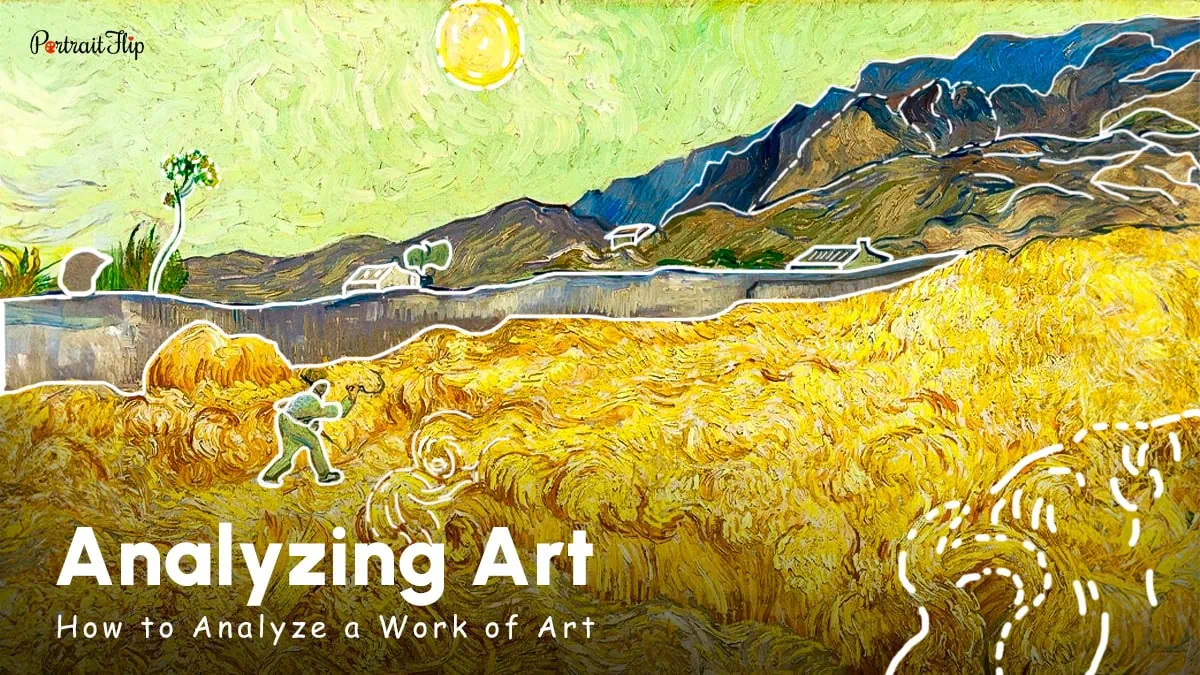Understanding how to analyze art is crucial for growing as an artist and fully appreciating the work of great artists.
If you don’t get what’s happening in a masterpiece, how can you expect to create something similar yourself?
Analyzing art is a rewarding activity and a tried-and-tested way to help you develop as a visual artist.
Through this step-by-step guide to analyzing artwork, you will learn more about your chosen artwork.
I’ll show you how to analyze art and also make it easier to see why great paintings are effective.
After reading this, try analyzing a painting and see how it makes a difference in your perspective.
Table of contents
What is Analysis?

To understand art, you first need to know what and how analysis works.
Analysis means carefully studying something complex or not fully understood to learn more about it.
It can help you figure out what something is and what makes it important, or it can help you understand how you respond to it.
Usually, analysis breaks down the whole into smaller parts to get a clearer picture.
For analyzing art, the whole is the artwork, and the parts might include things like the subject, the context, the colors, the composition, and the lines.
With this, let’s move ahead with the benefits you can receive while analyzing art.
Also Read: How to Fix Blurry Photos?: Restore Old Damaged Photos
The Benefits of Analyzing Artists Work

Looking at and studying other artists’ work helps you learn more about the art, the artist, and the context in which it was created.
It can reveal why the artwork was made, what influenced it, its impact, and why it caught your eye.
Analyzing art is enjoyable and can positively affect your well-being. It also helps you grow as an artist.
Analyzing art is useful if you’re studying art or thinking about it.
You can keep track of your analysis in a document, sketchbook, or digital file, along with the artwork image and any visual notes.
In this guide, “artwork” includes all types of visual art, such as sculpture, photography, painting, drawing, mixed media, and design.
Suggested Read: Art Investment: A Guide to Investing in Art
How Is Everything Linked?
Most paintings have two main parts:
1. Connected Elements: parts of the painting that flow smoothly together.
2. Powerful Statements: elements that create a strong contrast or break in the flow.
For example, if you paint a rough seascape, your brushstrokes might follow the choppy movement of the water.
But when the water crashes against the rocks, it creates a sudden stop that adds a strong statement to the painting.
In Claude Monet’s painting, the blue colors of the sky blend with the blue of the water. The soft edges connect the land with the sky and water.

At the water’s edge, where it meets the shore, you can see light blue mixed into the dark purple of the shore and dark purple mixed into the light blue water.
The horizontal brushstrokes in both areas help link them together.
This smooth connection is interrupted by the land on the left side of the painting.
Here, horizontal strokes meet vertical ones, and blue and purple change to greens, reds, and oranges.
This is how art analysis is done!
Suggested Read: Print Vs. Painting
What Does the Artist Want to Convey?

This is a basic overview of the painting.
To understand it better, think about what the artist is trying to express. What was on the artist’s mind when creating it?
Sometimes, the goal might be to show the beauty of the landscape the artist saw. Other times, there might be a deeper message.
It is important to know the artist’s perspective to analyze art.
Half of the answer is hidden in their viewpoint.
Love the Read?
Now you know how to analyze art and evaluate it based on the work.
The key is to know what the artist thought when they was working and boom, you cracked the code!
I hope this article has aided you in understanding what you were looking for.
I’ll get back with another piece soon. Till then, keep reading and exploring.
See ya!


